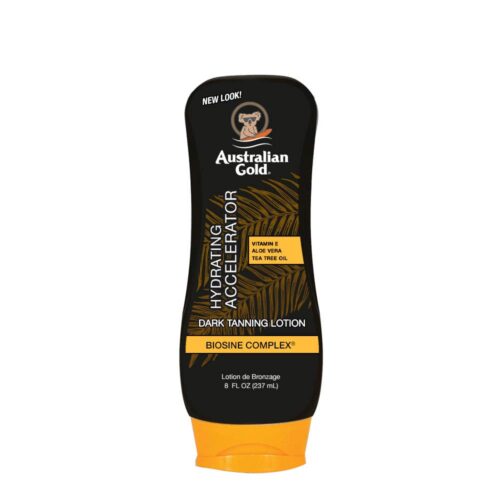The weather doesn’t always cooperate with your plans – no matter how much you want it to! If you were planning to spend some time outside tanning in the sun, only to look outside and see that it is cloudy, you would be understandably disappointed.
But before you write off your tanning plans, you could still develop a golden glow, even without the sun shining brightly down on your skin.
Can you tan through clouds? You can tan through clouds, and almost 90% of the sun’s UV rays still make it down through the clouds, meaning you can still build a tan, even if it does not feel as though you are in direct sunlight.
However, this also means you can develop sunburn when you least expect it, so keep reading to find out more about tanning through the clouds, the precautions you should take, and some tips on how to develop a gorgeous tan, even when the sun is hiding away!
Is It Possible To Tan Through Clouds?
It is very possible to tan through the clouds, and it is often on a cloudy day that people land up with the worst sunburn, because they assume if they can’t see the sun, it can’t reach their skin.
This is a myth though, as it is actually not the visible light from the sun that causes a tan, but rather the invisible UV rays that can penetrate through the clouds down onto your skin. So, while you cannot see the sun, the UV rays are still reaching your skin and causing a tan, or a burn.
There are three types of UV rays that are sent down from the sun:
UVA – UVA rays make up most of the UV rays sent down from the sun, and these rays are capable of penetrating your skin’s surface and traveling right down to the bottom dermis layer. UVA rays are responsible for premature aging and wrinkles.
UVB – UVB rays alter the top layer of skin and are the rays that cause sunburn. UVB rays are responsible for helping develop a tan, and they are strong enough that even 15 minutes of exposure can lead to a sunburn.
UVC – UVC rays are mostly absorbed by the atmosphere and do not make it down to your skin, so they are not considered too much of a risk.
On cloudy days, both UVA and UVB rays can make it through the clouds and down to your skin, so not giving your skin protection can lead to sunburn and eventually premature aging if you expose your skin to the sun often enough.
This also means that even though it is cloudy, you can lay outside and still develop a tan. Because there are only 80-90% of rays coming through the clouds, you would also have less chance of burning.
Is It Easier To Tan Through Clouds Or In the Sun?
It is probably easier to tan in the sun, as you will be getting the full force of the sun’s UV rays without losing any on the way. This means that you can make the most of your time in the sun, and hopefully only need to spend a short amount of time building up your tan.
However, tanning in the sun also means you have a higher chance of burning and peeling later on and damaging your skin. When tanning in the sun, you need to wear some sort of sun protection, such as an SPF 15, to prevent burning and to give your skin some protection.
It will take a little longer to tan through clouds, as only 80-90% of UV rays will be passing through, but this is still quite a large amount, so you will still be able to tan effectively. It also means you are less likely to burn, but you also could be tempted to spend longer outdoors not thinking you are burning – but you will be.
One of the benefits of tanning in the sun is that you are aware of the sun’s presence on your skin, and you will hopefully know when you have been out for long enough and then call it a day.
Tanning through clouds, you might not think much is happening to your skin, so you would stay out longer, but this will only land up burning your skin, as there are definitely UV rays coming through.
Do You Need To Wear Sunscreen On A Cloudy Day?
You should wear sunscreen on a cloudy day, no matter how much you think the sun might be hiding away.
There is still a very good chance that your skin could burn through the clouds, and it is a risk that you should not take.
If you know that you will be spending time outdoors and it is cloudy outside, then you should apply sunscreen to your skin. Make sure that it is a broad-spectrum sunscreen, to protect you from both UVA and UVB rays.
When you are not wanting to tan, you should use a high protection sunscreen, such as an SPF 30 or SPF 50, and if your skin is prone to burning, then the higher the protection the better.
If you are wanting to tan out in the clouds, then you would still need to use sunscreen. You might think it is counterproductive to use sunscreen when trying to tan, especially through clouds, but it is essential to protect your skin from burning.
You will really only be able to develop a brown, bronzed tan by using sunscreen when tanning, even through the clouds, and all you will need is a simple SPF 15 or SPF 20 depending on your skin type, and you will be able to tan your skin beautifully with minimal damage and burning.
It is also a good idea to include an SPF moisturizer into your daily skincare routine, just in case you do unexpectedly spend time outdoors, sun or clouds.
How To Tan On A Cloudy Day
Now that you know that you can tan on a cloudy day, it would help to have some tips on how you can build up a gorgeous tan when the sun is hiding away!
Here are some tips on how to tan on a cloudy day:
1. Focus On Preparation
Working towards a gorgeous, healthy tan starts before stepping foot into the sun (or under the clouds!) You need to make sure that you properly prepare your skin for exposure to UV rays, to be able to hold onto a tan better and to be able to avoid damage and burns.
Here are the best ways to prepare your skin before tanning on a cloudy day:
Exfoliate
Exfoliating your skin before heading out to tan is super important. Plan ahead and exfoliate your skin the day before tanning, using a gentle body scrub or exfoliating mitt.
You develop a tan on the outer layer of your skin, which also sheds off as skin cells die. By exfoliating your skin, you are exposing new skin, which will develop a dark tan, and which will stay around for longer than skin that has been sitting there for a while.
Skin that has been exfoliated will be able to absorb a tan better, and it will be able to hold onto it for longer as well.
Moisturize
Moisturizing your skin is the next important prep step you need to remember. Tanning, even on cloudy days, can really dry your skin out, and dry skin tends to burn and peel more. Hydrating your skin with a nourishing moisturizer is key to a healthy tan.
Moisturize your skin twice a day leading up to a tan, preferably after a shower, and in the days following a tan. Hydrated skin will tan easier and will hold onto a tan for longer too.
Shave
Shave your legs the day before tanning in the sun or through the clouds. Shaving exfoliates the skin, and if you shave just after your tan, you might strip some of it away.
2. Use Sunscreen
As mentioned above, between 80-90% of the sun’s rays still make it down to your skin on a cloudy day. This is more than enough to burn your skin, so you do need protection from sunscreen.
If you are looking to tan, then an SPF 15 or SPF 20 are both good options, but if your skin is fair and you do not have a base tan built up, then you should probably opt for an SPF 30. This will not prevent you from tanning, but it will give your skin enough protection to not burn and peel.
Do not attempt to tan through the clouds without sunscreen on, as that is a sure way to land up with a sunburn, especially because you won’t be expecting to burn as much as you do not see the sun shining down on you, but it will happen!
3. Use A Tanning Accelerator
To make the most of your time under the clouds, you might want to use a tanning accelerator. Tanning accelerators quicken the UV ray absorption into your skin, and the process of producing more melanin to darker your skin.
You need to remember that while you will be using a tanning accelerator to tan faster, you will still need to use sunscreen. Not all tanning accelerators come with sun protection, but you can apply a tanning accelerator and sunscreen onto your skin together.
Here are two great tan accelerators to use on a cloudy day:
Australian Gold Dark Tanning Accelerator Lotion

The Australian Gold Dark Tanning Accelerator Lotion will help you achieve a deeper tan in a shorter time, by intensifying your glow and helping it last longer too.
A blend of Australian natural ingredients is used to make this lotion nourishing, such as Kakadu plum and tea tree oil, which contain antioxidants to fight off free radicals, leaving your skin nourished and youthful-looking.
The tanning intensifier contains a blend of premium ingredients that help your skin darken more from time spent outdoors, and which help your skin darken even when you have finished tanning.
It is everything you need to keep your skin nourished while tanning, and to give your skin the deepest, darkest tan possible!
That’s What Sea Said Tanning Lotion Accelerator

This tanning lotion features a proprietary blend of tanning accelerators, such as Tyrosines, which have been specifically formulated to stimulate melanin production in your skin, accelerating the natural tanning process.
The white lotion blends into the skin well, and it will not transfer and leave stains on your clothes. It is packed with anti-aging ingredients, such as hibiscus, nourishing your skin and protecting it from drying out.
The ultra-hydrating formula with tropical fruit extracts will give you a golden glow and radiance once your tan develops, and ensures that your skin is left in beautiful condition!
It also has tattoo protection, allowing tattoos to remain bright and colorful, and it helps to extend your tan too.
4. Tan Properly
When it is time to sit out under the clouds to tan, here are some tips on what to do:
- Sit in an open spot that is not under shade from any buildings or an umbrella, so you can develop an even tan.
- The best hours to tan are before 10 am and after 4 pm, as the UV rays won’t be as strong during these times, so damage to your skin will be lessened, but you will still be able to build up a tan.
- Make sure to reapply your sunscreen often, to keep your skin protected throughout your tanning session.
- Only spend up to 20 minutes outside, depending on your skin type, with fair skin only needing around 10 minutes outdoors. This might not seem like a lot, but doing this every few days and using tanning accelerators will help you build up a natural tan.
- Change your position every few minutes to make sure that all areas of your body are being exposed to UV rays.
- Wear swimwear or tanning clothes that allow you to tan with minimal tan lines, and which will give you a natural-looking tan all over.
Final Thoughts
It is very possible to tan through the clouds, and cloudy days happen to be when people land up with sunburn most often, as they are not expecting to burn, so they do not use any sun protection!
The visible light from the sun is not what causes sunburn, instead, it is the invisible UV rays that do. On cloudy days, between 80-90% of these UV rays can still reach your skin, which means you can definitely tan.
You can also burn and end up peeling, so if you are heading outside on a cloudy day, whether to tan or not, make sure to wear sunscreen to protect your skin from sunburn!
Related Questions
Can you tan in one day?
You can technically get a tan in one day, but it is recommended that you do not try to do so, as you might just land up with red, burned skin, and you will likely peel after a few days.
You should instead tan slowly over about a 2 week period, to build up a natural tan safely.
Do you tan faster in water?
You can tan faster in water, whether swimming or on a pool float, as the sun reflects off of the water and bounces back onto you, intensifying onto your skin. Be careful of burning when swimming, and use a waterproof sunscreen for protection!
